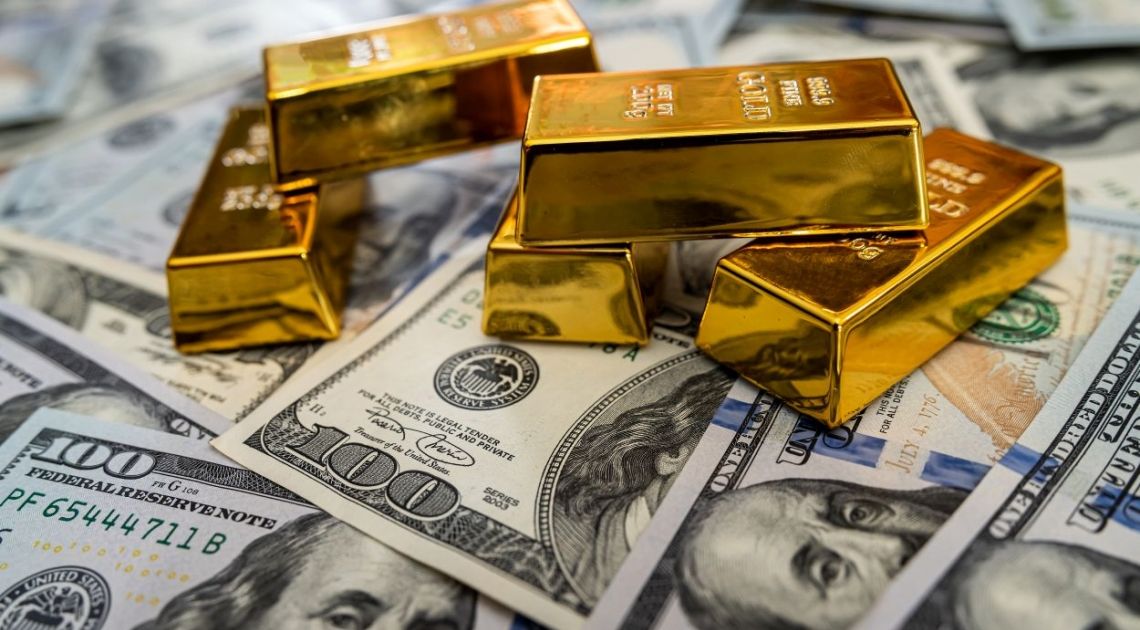
For centuries, precious metals such as gold and silver have held significant value as forms of currency, investments, and symbols of wealth. These metals attract investors for several reasons. Firstly, they have a long-established history as a reliable store of value. Secondly, they exhibit a low correlation to often volatile financial markets, making them a potential diversification tool. Lastly, they are considered a hedge against inflation, as their prices tend to rise during periods of economic uncertainty.
However, investing in precious metals does come with certain drawbacks. Liquidity can be an issue, meaning it may be challenging to quickly convert these assets into cash. Additionally, unlike stocks or bonds, precious metals do not generate yield or income, which can be a disadvantage for income-focused investors.
Given the recent rise in inflation and the growing uncertainty in financial markets, it is not surprising that interest in gold and silver is once again increasing. If you’re considering investing in these metals, it’s essential to follow best practices. These include conducting thorough research, understanding the market dynamics, and determining the appropriate allocation for your portfolio.
Common questions that arise when investing in gold and silver include understanding the various forms of ownership (e.g., physical bullion, ETFs, mining stocks), assessing storage options, and evaluating tax implications.
By familiarizing yourself with the best practices and addressing common questions, you can make informed decisions when investing in gold and silver. These precious metals can serve as valuable assets in your portfolio, offering potential long-term protection and diversification in times of economic uncertainty.
Investing in Gold and Silver ETFs and Mutual Funds
Investing in gold and silver ETFs (Exchange-Traded Funds) and mutual funds provides investors with an opportunity to gain exposure to the precious metals market without directly owning physical bullion. These investment vehicles pool investors’ money to invest in a diversified portfolio of gold and silver assets, such as futures contracts, mining company stocks, or derivatives.
Gold and silver ETFs are traded on stock exchanges, allowing investors to buy and sell shares throughout the trading day. They aim to closely track the performance of the underlying gold or silver price by holding physical metal or derivatives. These ETFs offer convenience, liquidity, and transparency, as their holdings and net asset values are disclosed daily.
Mutual funds, on the other hand, are managed by professional fund managers who make investment decisions on behalf of the fund’s shareholders. These funds can invest in a combination of gold and silver assets, along with other related securities. Mutual funds are priced at the end of each trading day and can be bought or sold at the fund’s net asset value (NAV).
Investing in gold and silver ETFs and mutual funds offers several advantages. Firstly, they provide instant diversification by holding a basket of gold and silver assets, reducing individual company or issuer risk. Secondly, these investment vehicles offer flexibility, as investors can enter or exit their positions at any time during market hours. Additionally, they eliminate the need for physical storage and security concerns associated with owning physical bullion.
However, it is essential to consider some factors before investing in these funds. Firstly, investors should assess the fund’s expense ratio and management fees, as these costs can impact overall returns. Additionally, understanding the fund’s investment strategy, holdings, and performance track record is crucial for informed decision-making.
Investing in gold and silver ETFs and mutual funds allows investors to participate in the potential price appreciation of these metals while benefiting from the liquidity and convenience of the financial markets. As with any investment, it is advisable to carefully evaluate your investment goals, risk tolerance, and conduct thorough research before making investment decisions.
Investing in Gold and Silver Mining Stocks
Investing in gold and silver mining stocks is another way to gain exposure to the precious metals market. Unlike investing in physical bullion or ETFs/mutual funds, investing in mining stocks involves purchasing shares of companies that are involved in the exploration, development, and production of gold and silver.
There are several factors to consider when investing in mining stocks. Firstly, it’s important to research and evaluate the financial health, management team, and track record of the mining company. Look for companies with proven reserves, strong production capabilities, and a history of successful operations. It’s also crucial to assess the geopolitical risks and regulatory environment in the regions where the company operates, as these factors can impact its profitability.
Additionally, investors should analyze the cost structure of the mining company, including factors such as production costs, capital expenditures, and hedging strategies. A company with low production costs and effective cost management can be more resilient to fluctuations in the price of gold and silver.
Furthermore, understanding the macroeconomic factors that affect the price of gold and silver is essential. Factors such as inflation, interest rates, currency fluctuations, and global economic conditions can significantly impact the profitability of mining companies and the overall performance of the sector.
Investing in mining stocks can offer potential advantages. As the price of gold and silver rises, mining companies can benefit from increased revenue and improved profitability. Additionally, mining stocks can provide leverage to the price of the underlying metals, potentially outperforming the physical metal or ETFs/mutual funds during bull markets.
However, investing in mining stocks also carries certain risks. The mining industry is subject to various operational risks, such as exploration risks, regulatory risks, environmental risks, and labor issues. Additionally, mining stocks can be volatile and influenced by factors specific to individual companies, such as management decisions, mine production disruptions, or reserve depletion.
As with any investment, it is crucial to conduct thorough research, diversify your portfolio, and carefully assess your risk tolerance before investing in gold and silver mining stocks. Consider consulting with a financial advisor or professional who specializes in the mining sector to gain further insights and make informed investment decisions.












